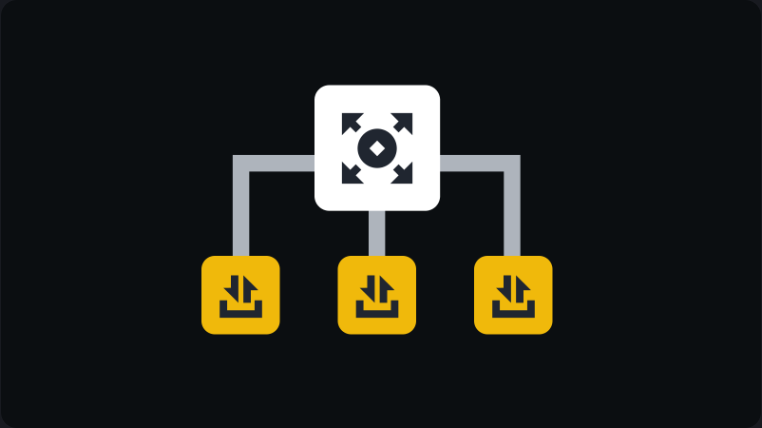
Parallelization in the blockchain field is a method of processing multiple transactions simultaneously.
There are various types of parallelization, including transaction-level parallelization, block-level parallelization, and smart contract parallelization.
The advantages of parallelization include faster transaction processing, improved scalability, and reduced gas fees.
Introduction
Efficient transaction processing is key to increasing blockchain network throughput and addressing blockchain scalability issues. This article will introduce the basics, principles, common types, and potential benefits of parallelization.
What is Parallelization?
Parallelization (parallel transaction execution) is a method of processing multiple tasks simultaneously. Parallelization is closely related to the concept of parallel computing in computer science. Parallel computing refers to the simultaneous execution of multiple processes.
How Does Parallelization Work?
Network data is organized through parallelization, allowing multiple transactions to be verified simultaneously rather than processed sequentially one by one. The task of executing transactions is distributed across multiple nodes. Each node processes a portion of the transaction volume separately, which helps speed up processing time and alleviate network congestion.
In parallel transaction processing, the network can simultaneously examine various potential states, each representing the result of verifying a specific set of transactions. This allows the network to assess the potential impact of transactions before they are officially recorded in the ledger. After evaluation, the nodes agree on a common state, reflecting the unified result of parallel verification.
Parallelization Models
Blockchain parallelization is divided into two main types: optimistic parallelization and state access parallelization.
-
Optimistic Parallelization
In the optimistic parallel execution model, the network skips the initial sorting phase and processes transactions simultaneously. This approach assumes that most transactions in the queue are independent and employs a method to recheck and correct any interdependent transactions after execution. In other words, if transactions are initially deemed unrelated but later found to affect each other, the system will adjust these transactions to ensure data accuracy. -
State Access Parallelization
In the state access parallel execution model, the network first categorizes transactions based on their impact on the network state. These impacts include interactions with specific smart contracts or accounts, which helps determine which transactions can be processed in parallel without conflict. Non-interacting transactions can be executed simultaneously. Conversely, transactions affecting similar state factors must be processed in a specific order, with priority determined by gas fees.
Types of Parallelization
Transaction-Level Parallelization
Transaction-level parallelization refers to the simultaneous processing of multiple transactions. This increases network throughput and transactions per second (TPS). Additionally, transaction-level parallelization reduces the time required for transaction confirmation, improving the network's overall responsiveness. This type of parallelization is ideal for high-demand blockchains that must maintain fast processing times.
However, transaction-level parallelization also presents challenges. For example, simultaneous transaction processing is highly dependent on data. The output of one transaction may affect another, requiring complex data management strategies to ensure consistency and reliability.
Block-Level Parallelization
Block-level parallelization refers to the simultaneous creation and verification of blocks, aiming to improve network scalability. By processing multiple blocks concurrently, this method helps blockchains accommodate more transactions and prevent potential network congestion.
However, block-level parallelization must be implemented carefully to avoid compromising blockchain security. Additionally, block-level parallelization requires more computational resources, increasing the hardware demands on network nodes. This may limit some users' participation in the network, negatively impacting decentralization and accessibility.
Smart Contract Parallelization
Smart contract parallelization refers to the parallel execution of multiple smart contracts. This can enhance the performance of decentralized applications (DApps), improving their scalability and responsiveness.
Various mechanisms facilitate the parallel execution of smart contracts. For example, optimistic rollups execute transactions off-chain, interacting with the blockchain only upon transaction confirmation, thereby reducing the load on the main chain. Ethereum's Validium scaling solution combines zero-knowledge proofs with off-chain computation, offering scalability and privacy for smart contract applications.
Advantages of Parallelization
Faster Transaction Processing
Distributing tasks across multiple nodes reduces transaction execution time and speeds up transaction processing. Networks implementing parallelization are often more efficient than those using sequential processing models.
Scalability
Parallelization distributes transaction validation across multiple nodes, addressing blockchain scalability issues. This not only speeds up the process but also supports horizontal scaling, where nodes are added or removed based on demand.
Lower Gas Fees
Parallelization assigns transactions to subsets of nodes, reducing transaction fees. This approach is more cost-effective than sequential processing, where each transaction must be verified by every node. Additionally, faster transaction speeds reduce competition among nodes, further lowering transaction fees.
Conclusion
Parallelization is a method of processing multiple transactions simultaneously, offering advantages such as faster transaction processing, improved scalability, and lower fees. In the future, parallelization could be combined with other scaling solutions like sharding to further enhance blockchain network scalability.
















